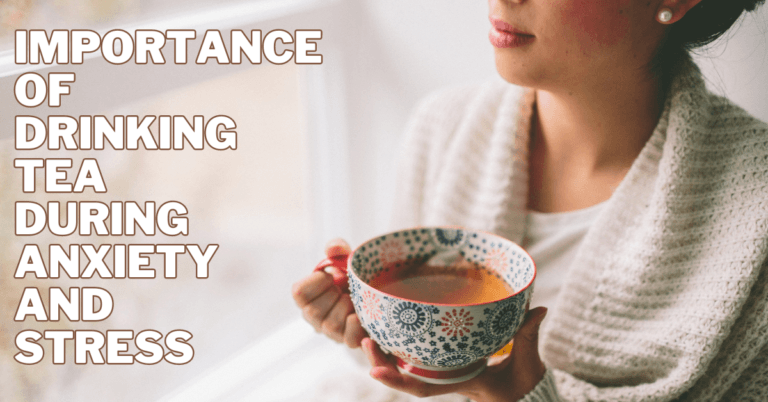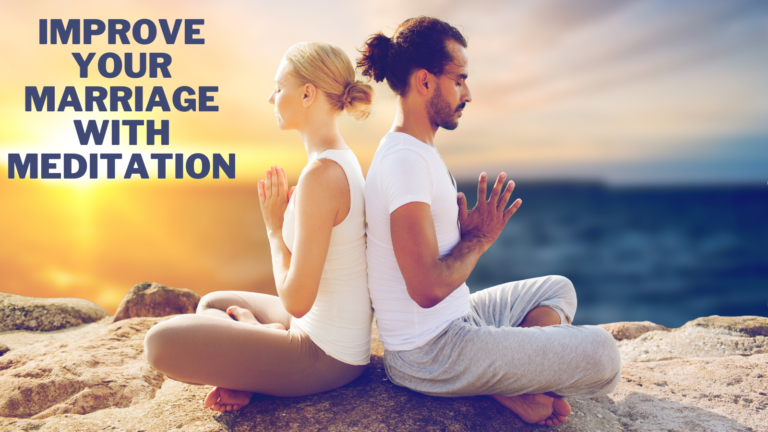Easy Yoga Poses For Stress Relief
Easy Yoga Poses For Stress Relief
Stress has become an unwelcome companion for many in the hustle and bustle of our modern lives.
Amidst the chaos, incorporating simple yet effective practices into our daily routine can make a substantial difference.
With centuries-old roots in promoting holistic well-being, yoga is a beacon of tranquillity in the storm of stress.
This article will provide a comprehensive guide on incorporating easy yoga poses for stress relief into your daily routine. These poses offer a tranquil antidote to the chaos of modern life.
By combining physical postures with mindful breathwork, these gentle yoga poses aim to release tension, calm the mind, and provide a respite from the demands of everyday life.
Join us on this journey as we explore the art of incorporating easy yoga into your routine, unlocking the gateway to a more serene and balanced existence amidst the challenges of the modern world.
Embrace the transformative power of yoga as we embark on a quest for stress relief and inner peace.
Benefits Of Yoga For Stress Relief
Yoga, renowned for its multifaceted impact on overall well-being, is a powerful ally in the battle against stress.
The benefits of incorporating yoga into one's routine extend far beyond the physical realm, offering a holistic approach to stress relief. Here are some key advantages:
1. Balanced Nervous System
Yoga practices, especially those incorporating breath control, help balance the autonomic nervous system.
This balance between the sympathetic (fight or flight) and parasympathetic (rest and digest) nervous systems promotes a state of equilibrium and reduces stress responses.
2. Mind-Body Connection
Yoga encourages a deep connection between the mind and body. Yoga's cultivation of mindful awareness makes people more aware of their emotions and physical sensations, which helps them identify stressors.
3. Release Of Tension
Asanas, or physical postures, are yoga practices that focus on the neck, shoulders, and jaw, where people frequently maintain tension. The practice helps release physical knots and discomfort associated with stress.
4. Enhanced Blood Circulation
Yoga promotes better blood circulation, particularly inversions and twists. Improved circulation ensures oxygen and nutrients reach all body parts, aiding relaxation and reducing stress.
5. Stress Hormone Regulation
Regular yoga practice has been linked to reducing the production of stress hormones like cortisol. This hormonal balance contributes to a more relaxed physiological state.
6. Community And Social Support
Joining a yoga class or community provides social support, creating a sense of belonging and connection.
Social interactions and shared experiences contribute to emotional well-being and stress resilience.
7. Self-Care Ritual
Incorporating yoga into a routine establishes a consistent self-care ritual. Taking time for oneself through yoga promotes self-compassion and a proactive approach to managing stress.
8. Mindful Eating Habits
Mindful eating practices often associated with yoga extend beyond the mat. The awareness cultivated during yoga encourages mindful choices, promoting a balanced and nourishing diet that contributes to overall well-being.
9. Improved Posture
Many yoga poses focus on alignment and core strength, contributing to improved posture. Better posture has physical benefits and can positively impact mood and stress levels.
10. Adaptability And Coping Skills
Yoga teaches adaptability and flexibility, both physically and mentally. These qualities extend beyond the mat, providing individuals with valuable coping skills to navigate life's uncertainties and challenges.
Incorporating yoga into one's lifestyle can offer a multifaceted and sustainable approach to stress management, promoting overall well-being and resilience in the face of life's stressors.
Exploring The Easy Yoga Poses For Stress Relief
The search for stress relief becomes a vital path toward well-being in the face of life's demanding pace and everyday obstacles.
These simple yoga poses have a reputation for helping people de-stress. To enhance relaxation, try holding each pose for a few breaths while moving slowly and paying attention to your body. So, let’s get started:
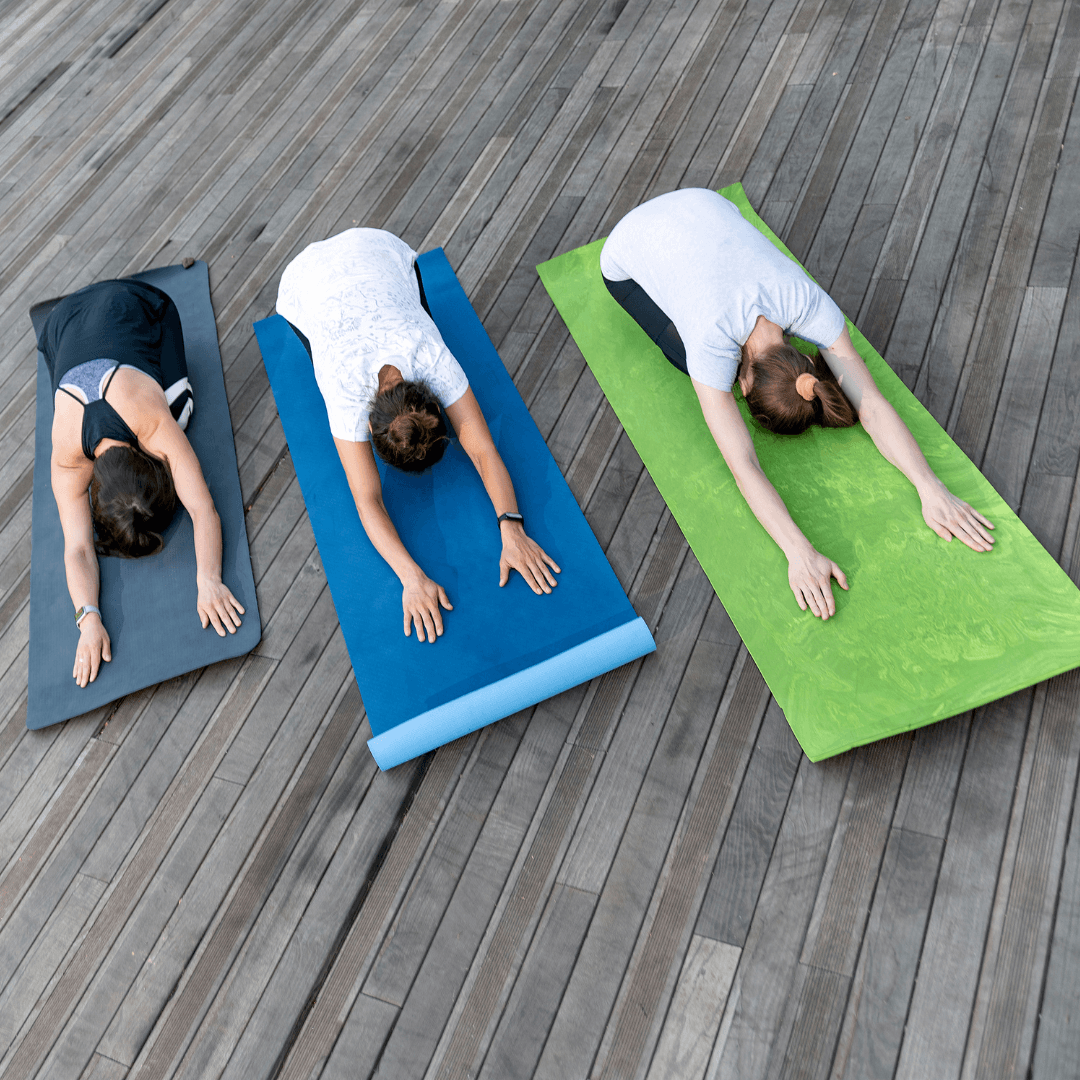
1. Child's Pose (Balasana) For Stress Relief
Balasana, also known as Child's Pose, is a fundamental and incredibly restorative yoga pose that can also effectively reduce stress.
To ease into this pose, begin by kneeling on the mat with your big toes touching and your knees comfortably apart.
Gently lower your hips towards your heels, creating a space between your thighs. As you extend your arms forward, let your torso descend towards the mat, bringing your forehead to rest on the ground.
This posture encourages a gentle stretch in the hips, thighs, and lower back, releasing tension accumulated from daily activities or prolonged periods of sitting.
The spine's elongation promotes a soothing stretch throughout the back, fostering a sense of openness and relaxation.
Child's Pose is a physical repose and an opportunity for mental and emotional grounding. As you settle into the pose, focus on deep and mindful breathing, allowing each inhale to invite calmness and each exhale to dispel stress.
Embrace the simplicity of Child's Pose as a refuge of tranquillity, providing a moment of respite amid life's demands.
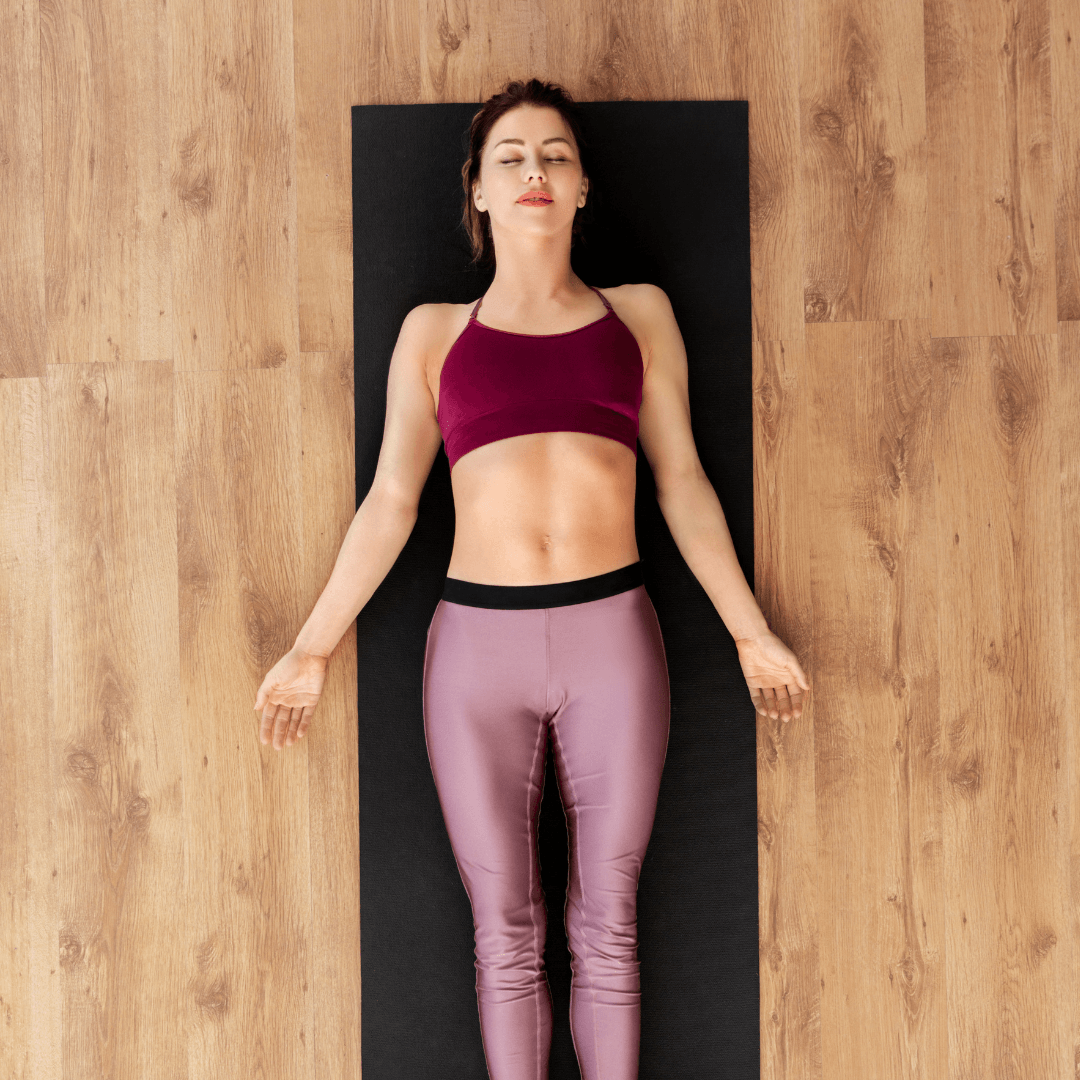
2. Corpse Pose (Savasana) For Stress Relief
Corpse Pose, or Savasana, is an essential and accessible yoga posture for stress relief, guiding practitioners to profound relaxation and conscious rest.
To enter this pose, lie on your back with your legs extended and arms resting gently by your sides, palms facing upwards.
Close your eyes to initiate a profound turn inward. Savasana is a physical posture and a holistic experience of surrendering both body and mind.
As you settle into stillness, consciously release tension from each part of your body, allowing the mat to support you fully.
This asana serves as a moment of conscious rest, permitting the breath to follow its natural rhythm.
The gentle rise and fall of the chest in time, with the soothing cadence of each inhale and exhale, creates a meditative melody.
Savasana is a chance to step back from the daily grind and accept the present moment calmly and collectedly.
As the mind wanders, gently guide it back to the awareness of breath, fostering a tranquil state of mindfulness.
In this pose, the body mimics a state of deep sleep, yet the mind remains awake and attuned. Savasana offers a sanctuary for rejuvenation, a sacred pause in which the profound benefits of the yoga practice integrate and unfold.
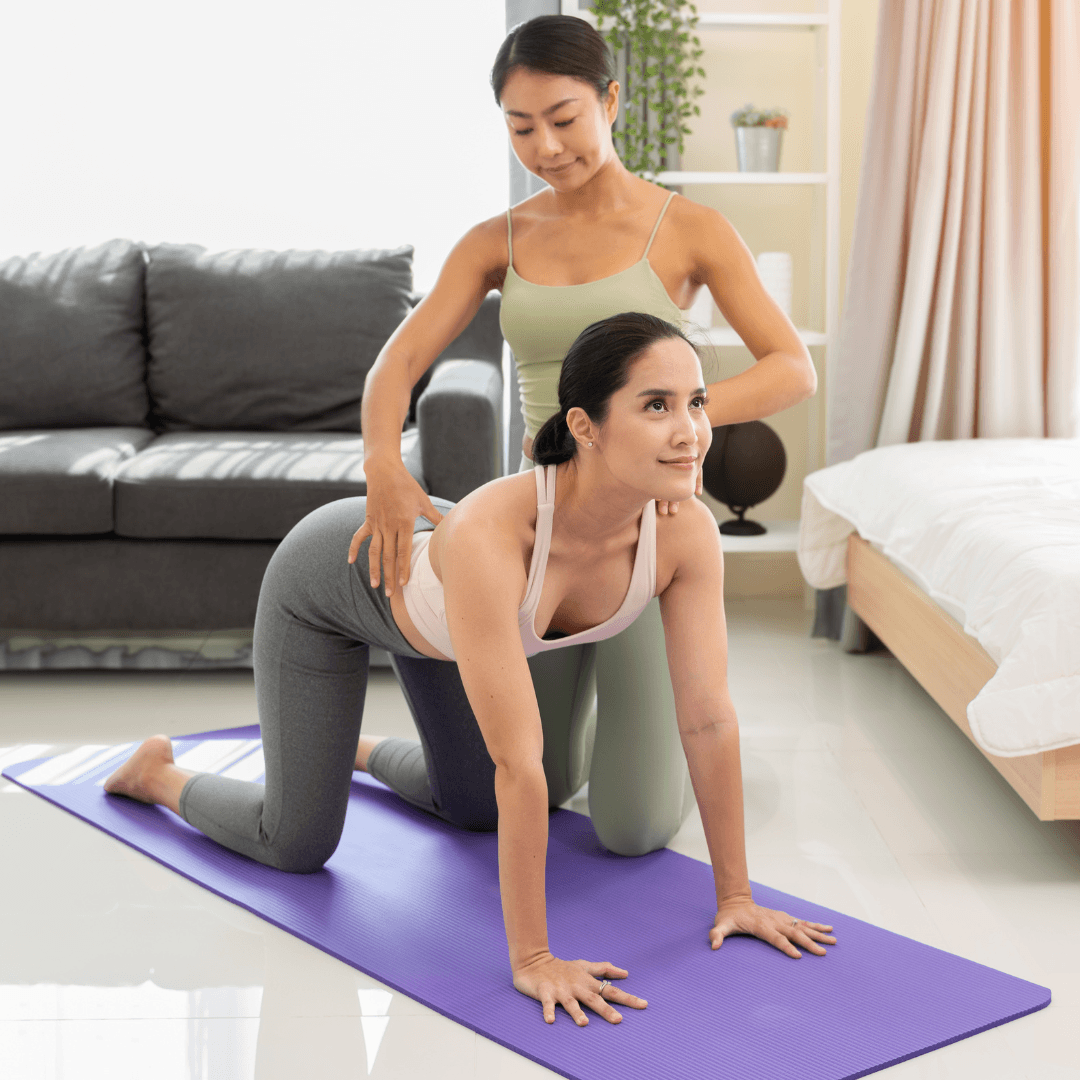
3. Cat-Cow Stretch (Marjaryasana-Bitilasana)
With its fluid sequence and breath synchronization, the Cat-Cow Stretch is a dynamic and easy yoga pose for stress relief, promoting flexibility and mindful movement.
Begin on all fours in a tabletop position, ensuring your wrists are aligned with your shoulders and your knees beneath your hips.
As you inhale, gracefully arch your back, allowing your belly to sink towards the mat, and lift your head, embodying the gentle curve of Cow Pose.
This expansive movement stretches the front of your torso and engages the spine. After you've released the air, release the pose by bringing your navel toward your spine, tucking your chin into your chest, and rounding your spine towards the ceiling.
The flowing motion between these two poses creates a dynamic rhythm, synchronizing breath with movement.
The Cat-Cow Stretch is a delightful warm-up, promoting spine, shoulders, and neck flexibility.
Additionally, it stimulates the abdominal organs and enhances circulation, fostering a sense of vitality.
As you gracefully undulate between these poses, the sequence becomes a dance of breath and motion, inviting a mindful connection between the physical body and the rhythm of your breath.
This accessible and rejuvenating practice is often embraced as a foundational sequence in yoga, offering a revitalizing start to any session.
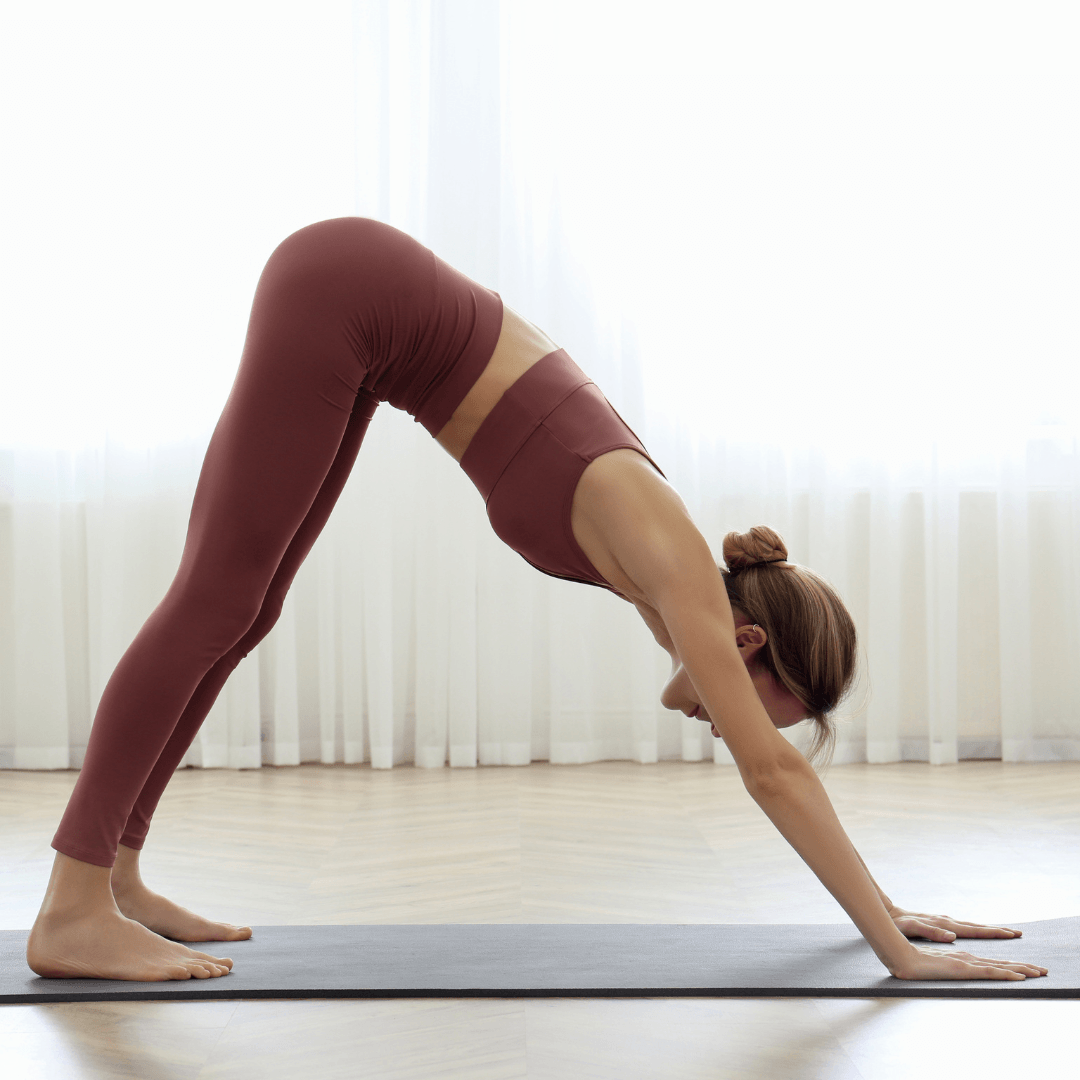
4. Downward-Facing Dog (Adho Mukha Svanasana)
Downward-Facing Dog, or Adho Mukha Svanasana, offers one of the most powerful and easy yoga poses for stress relief, combining strength and flexibility to rejuvenate the body and calm the mind.
To enter this invigorating pose, commence on your hands and knees in a tabletop position, ensuring your wrists align beneath your shoulders and knees beneath your hips.
As you gracefully lift your hips towards the ceiling, straighten your legs, creating an inverted V shape with your body.
Allow your heels to descend towards the floor, grounding them firmly while keeping your hands shoulder-width apart, fingers spread wide, and pressing firmly into the mat.
Downward Dog stretches and lengthens the spine, fostering hamstrings, calves, and shoulder flexibility.
This posture engages the entire body, promoting strength in the arms and legs. The inversion aspect enhances blood circulation, offering a revitalizing flow to the brain and encouraging mental clarity.
The pose also serves as a gentle inversion, stimulating the digestive organs and fostering a sense of rejuvenation.
Embraced as both a foundational and transitional pose, Downward-Facing Dog is a cornerstone of yoga practice, providing a moment of both dynamic energy and tranquil introspection.

5. Standing Forward Bend (Uttanasana) For Stress Relief
Standing Forward Bend, or Uttanasana, is a grounding and revitalizing yoga pose that invites a profound release of tension and a gentle stretch throughout the entire back body.
To gracefully enter this posture, begin standing with your feet hip-width apart. As you hinge at your hips, fold forward with a generous knee bend, allowing your torso to cascade toward the earth.
Allow the weight of your head to create a gentle traction, releasing any strain in the neck and shoulders.
For a deeper stretch, gently grab opposite elbows, letting your arms dangle like a garland. The soothing sway from side to side amplifies the stretch, creating a rhythmic motion that encourages further relaxation.
Uttanasana elongates the spine, decompressing the vertebrae and promoting flexibility in the hamstrings and calves.
The inverted position also facilitates increased blood flow to the brain, fostering mental clarity and a sense of calm.
This pose is a sanctuary of introspection, providing a moment to turn inward, surrender to gravity, and let go of accumulated stress.
Uttanasana can be both a grounding start to a yoga practice or a restorative pose to revisit throughout the day, offering a refuge of tranquillity amidst life's demands.
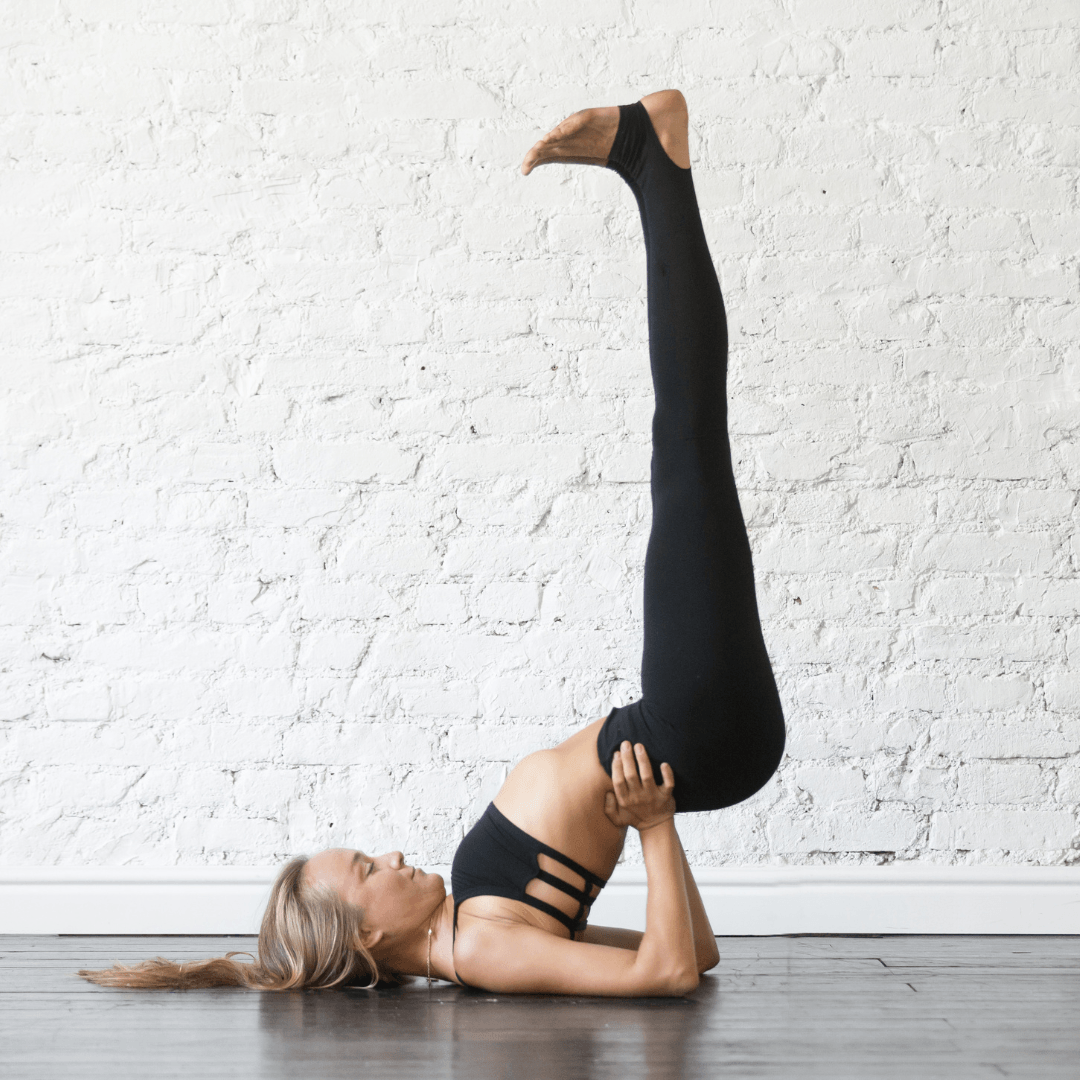
6. Legs Up the Wall (Viparita Karani)
Posing gently inverted and breathing mindfully, Legs Up the Wall, also known as Viparita Karani, is one of the easiest yoga poses for relieving stress and encouraging rejuvenation.
Seated near a wall, with one side of your body touching the wall, take up this pose with grace. Your legs should be extended upward and rest against the wall as you gently lie on your back.
Your shoulders should soften into the mat as you allow your arms to lie comfortably by your sides, palms facing up.
As you settle into the pose, bring your attention to your breath, cultivating a sense of mindfulness and presence.
Viparita Karani is a gentle inversion, facilitating the return of blood and lymphatic fluid from the lower body towards the heart, thereby reducing swelling and promoting circulation.
This pose also encourages relaxation and release, alleviating tension in the legs, lower back, and hips.
As gravity gently pulls the body's weight towards the earth, a profound sense of grounding and surrender ensues.
Viparita Karani, or Legs Up the Wall, serves as a vital sanctuary and easy yoga poses for stress relief, fostering relaxation, release, and a profound sense of grounding amidst life's demands.
Embrace this pose as a sacred retreat, allowing its tranquil embrace to nourish your body, soothe your mind, and restore your spirit.

7. Easy Pose (Sukhasana) With Forward Fold
The Easy Pose with Forward Fold, or Sukhasana with Forward Fold, combines the ease of a seated posture with the therapeutic benefits of a forward bend, creating a harmonious blend of tranquillity and flexibility.
Begin by sitting in Sukhasana or cross-legged, ensuring your spine is lengthened and your shoulders are relaxed.
With a mindful inhale, find length in your spine, and as you exhale, gently hinge at your hips, allowing your torso to fold forward gracefully.
This modification introduces a forward bend element to the classic cross-legged seated pose. As you descend, aim to rest your forehead on the mat or a yoga block, promoting a deeper stretch along the spine and the back of the neck.
This gentle forward fold enhances flexibility in the hips, hamstrings, and lower back, releasing accumulated tension from prolonged periods of sitting.
The pose also encourages a calming introspection, fostering a sense of tranquillity as you turn your awareness inward.
The combination of Sukhasana and Forward Fold offers a balanced fusion of grounding and surrender, making it accessible for practitioners of various levels.
Embrace this pose to create a moment of serenity, allowing the melding of breath and movement to guide you toward a state of peaceful repose.
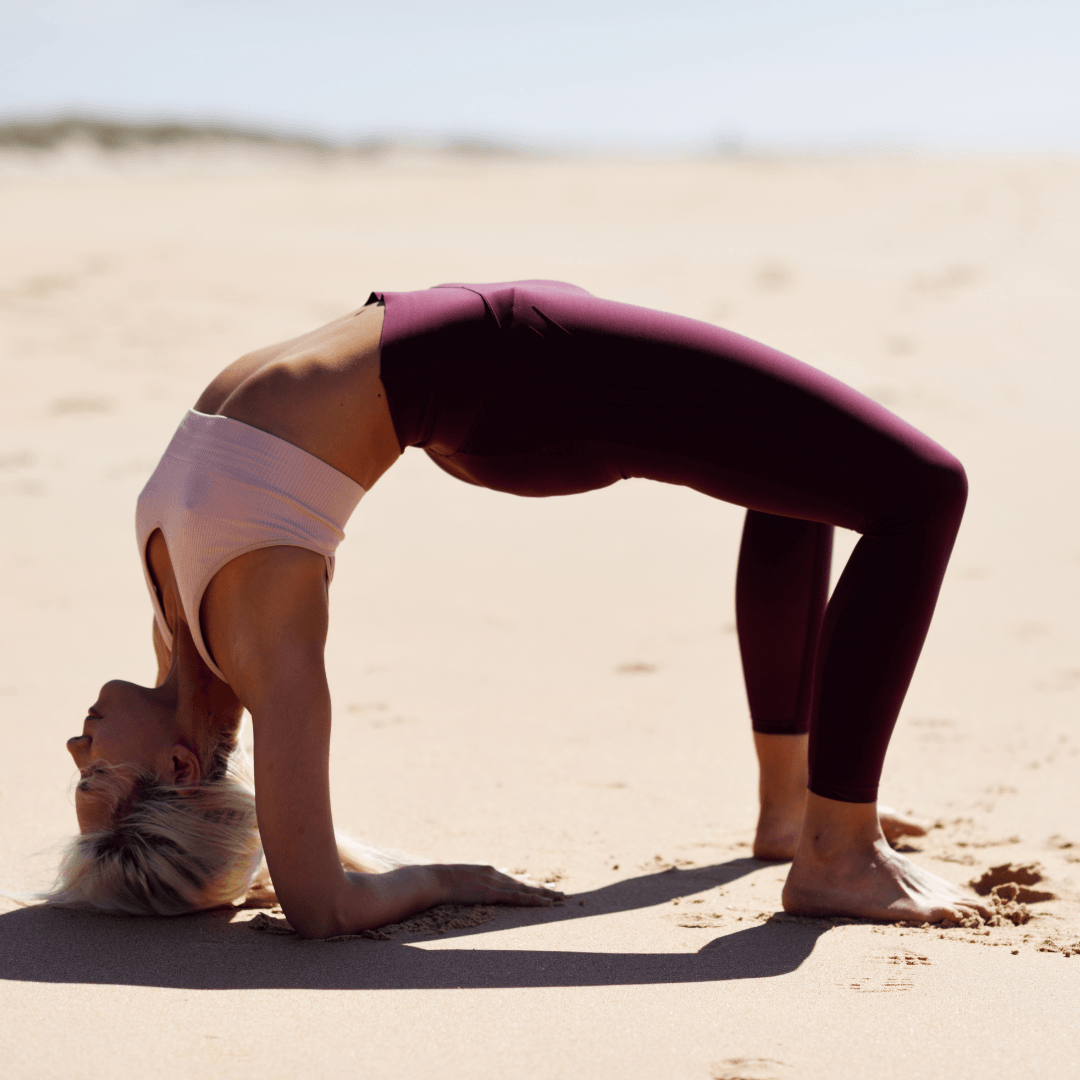
8. Bridge Pose (Setu Bandhasana)
Bridge Pose, or Setu Bandhasana, is a versatile and energizing yoga posture that actively engages the core while promoting flexibility in the spine and hip flexors.
To begin, lie on your back with your knees bent and feet hip-width apart, ensuring your heels are comfortably close to your hips.
As you initiate the pose, press firmly into your feet, activating your thighs and lifting your hips towards the ceiling.
Interlace your fingers under your back and draw your shoulder blades together, creating a stable foundation.
Extending the arms into the mat provides additional support while accentuating the chest lift.
Bridge Pose strengthens the legs, glutes, and core and offers a gentle stretch across the chest and shoulders.
The pose stimulates the thyroid and improves digestion, contributing to an overall sense of vitality.
Setu Bandhasana is considered a mild inversion, promoting blood circulation and revitalizing the body as the heart lifts higher than the head.
Setu Bandhasana, or Bridge Pose, seamlessly integrates strength and flexibility. It provides easy yoga poses for stress relief, stimulates the thyroid, improves digestion, and fosters an overall sense of vitality.
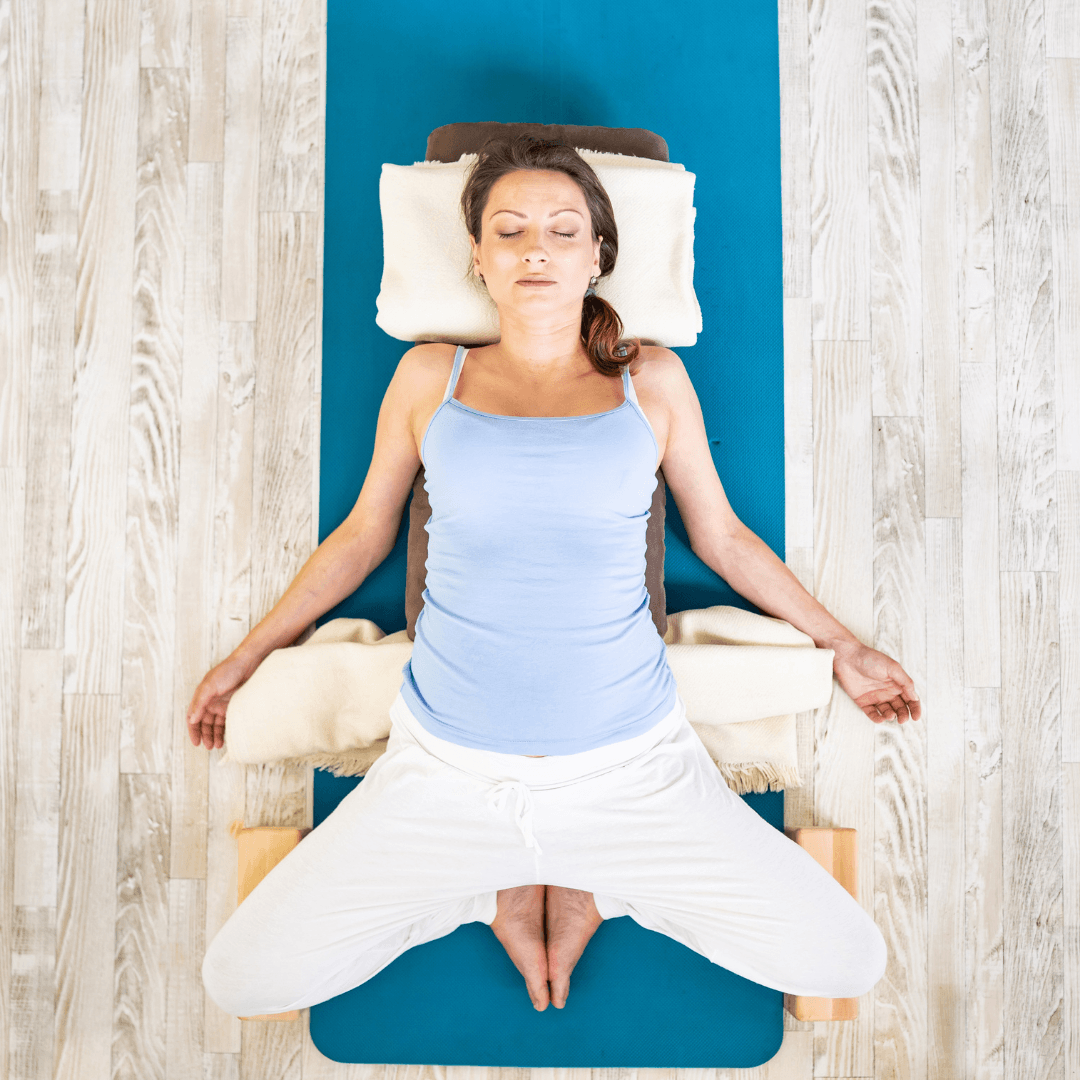
9. Reclining Bound Angle Pose (Supta Baddha Konasana) For Stress Relief
Reclining Bound Angle Pose, or Supta Baddha Konasana, offers a nurturing and stimulating experience, combining the benefits of hip opening with a tranquil reclined posture.
Begin by lying on your back, bringing the soles of your feet together, and allowing your knees to fall open to the sides.
This shape resembles the fluttering wings of a butterfly, creating a gentle opening in the hips and inner thighs.
Consider placing blocks or cushions under each knee to enhance comfort, especially if the hips or inner thighs feel tight.
This modification encourages a sense of ease and allows the hips to relax into the pose gradually.
Supta Baddha Konasana is revered for its ability to alleviate pelvic and lower back tension, making it an excellent choice for those seeking relief from stress and fatigue.
As you surrender into the pose, focus on your breath, allowing each inhale to bring a sense of spaciousness to the chest and each exhale to release residual tension.
This pose is often embraced as a restful conclusion to a yoga practice or as a gentle way to unwind before bedtime. It promotes calm relaxation and invites a deep connection with the present moment.
Conclusion
Remember to pay attention to your body and take deep breaths. Try modifying or avoiding any pose that hurts or feels uncomfortable.
Poses should suit your comfort level and improve your overall well-being because yoga is about finding ease and relaxation.
In conclusion, integrating easy yoga poses for stress relief into your daily routine can be a transformative journey toward enhanced well-being and tranquillity.
These accessible poses offer physical benefits by promoting flexibility, strength, and relaxation and provide a sanctuary for mental and emotional balance.
The intentional connection of breath with movement in these poses invites a state of mindfulness, grounding practitioners in the present moment and fostering a deep sense of calm.
As you embark on this yogic voyage, remember that consistency and self-compassion are key.
Allow the rhythm of your breath to guide you through each pose, honouring your body's unique needs and embracing the opportunity for introspection.
Regularly practicing these easy yoga poses empowers you to navigate life's challenges more resiliently, inviting a harmonious balance between body, mind, and spirit.
Embrace the simplicity of these poses, and let your yoga journey become a sacred self-care and stress-management ritual.
I trust you enjoyed this article about Easy Yoga Poses For Stress Relief. Please stay tuned for more blog posts soon.
JeannetteZ
>>>Please click here to read my all-inclusive article about Lessons That Will Teach You All About Stress<<<
>>>Are you interested in Natural Healing And Stress Relief through Herbs? Please click here for my #1 Recommendation<<<
Your Opinion Is Important To Me
Thoughts? Ideas? Questions? I would love to hear from you. Please leave me your questions, experiences, and remarks about this Easy Yoga Poses For Stress Relief article in the comments section below. You can also reach me by email at Jeannette@Close-To-Nature.org.
Disclosure
This post may contain affiliate links. As an Amazon Associate and other affiliate programs, I earn from qualifying purchases at no extra cost to you. Please read my full affiliate disclosure.
You might also enjoy these blog posts:
10 Best Stress-Relieving Plants For Your Office
10 Best Stress-Relieving Plants For Your Home
Spirituality And Stress Relief
Stress Relief Activities For Kids
Stress Relief Activities For Students







